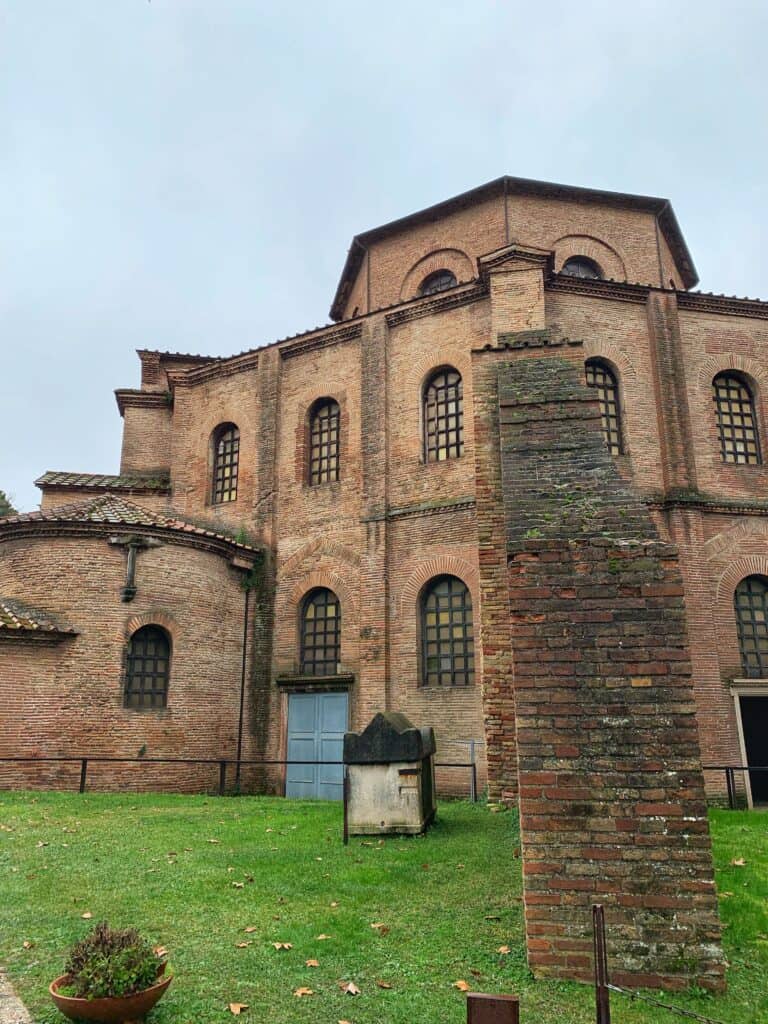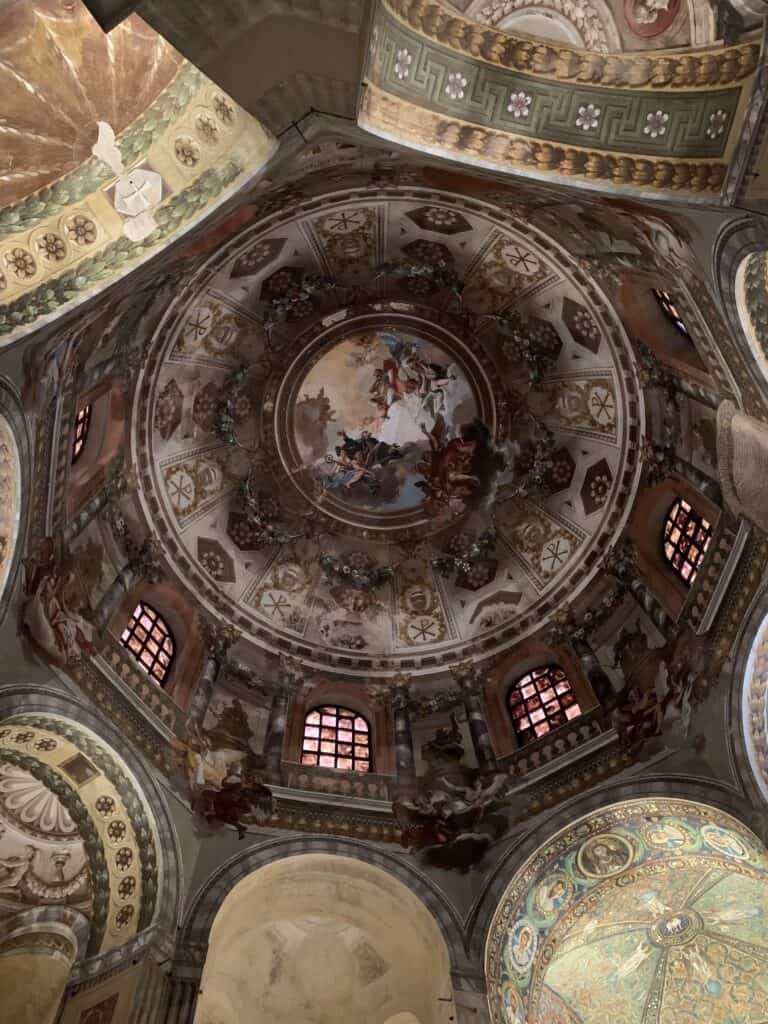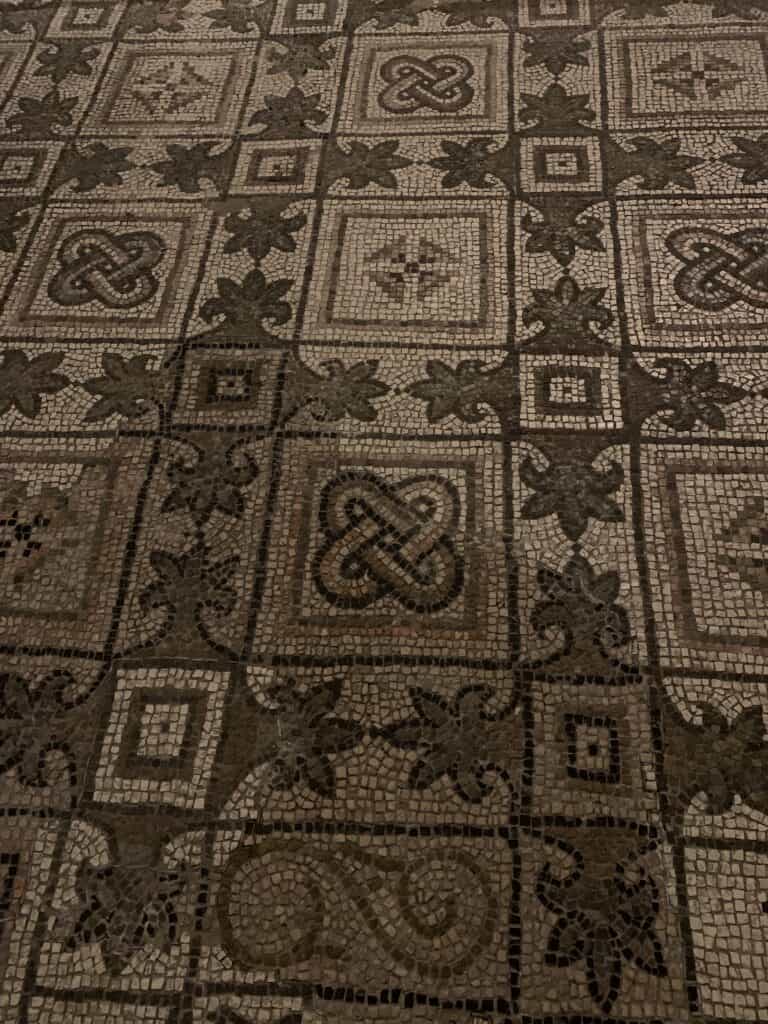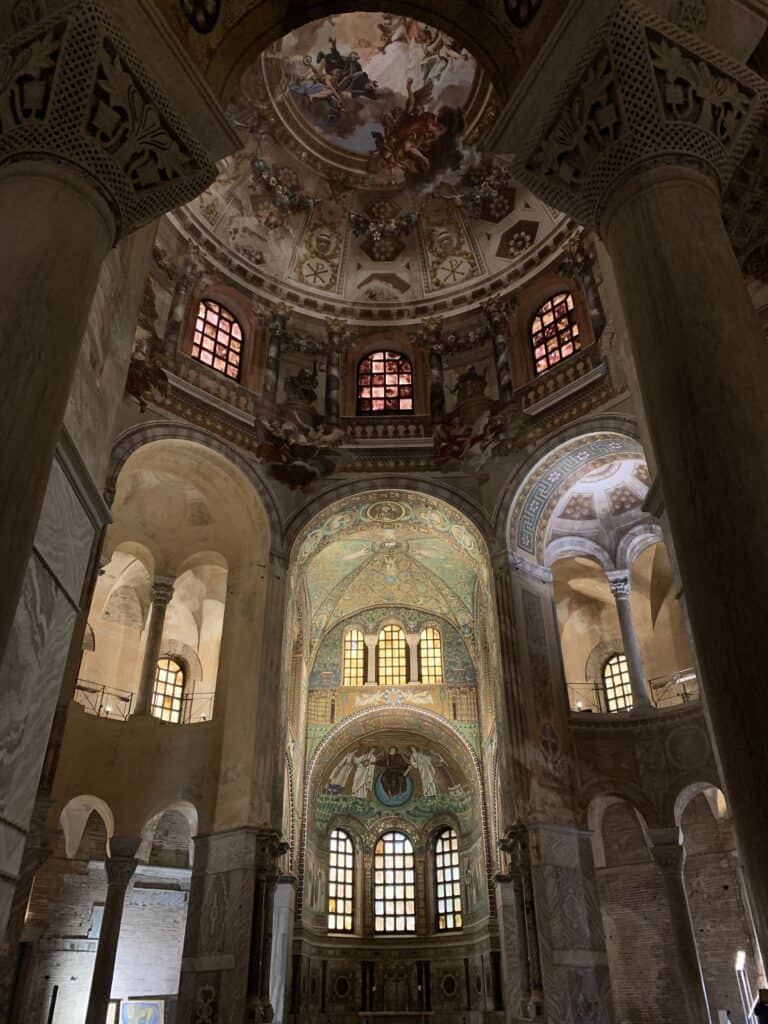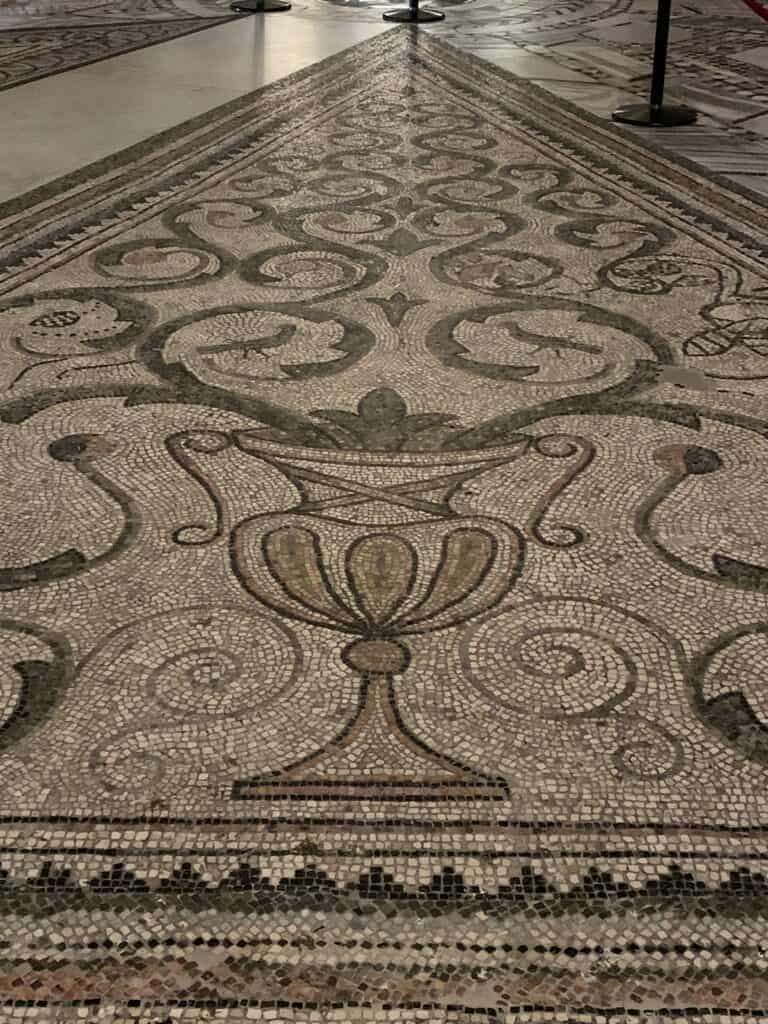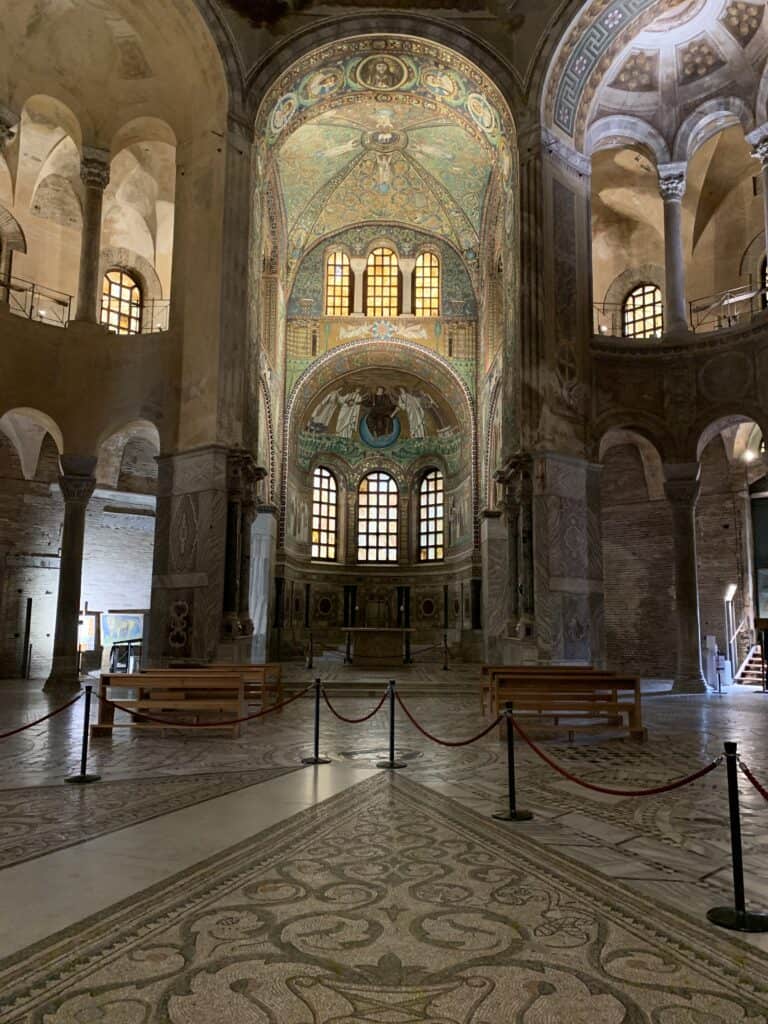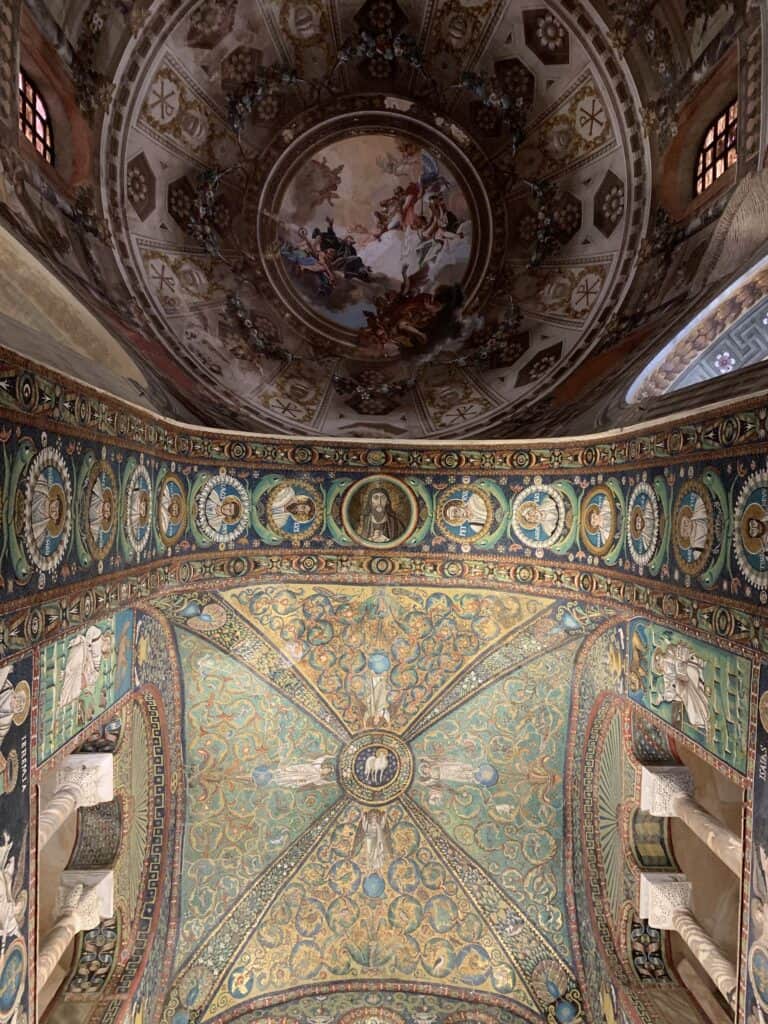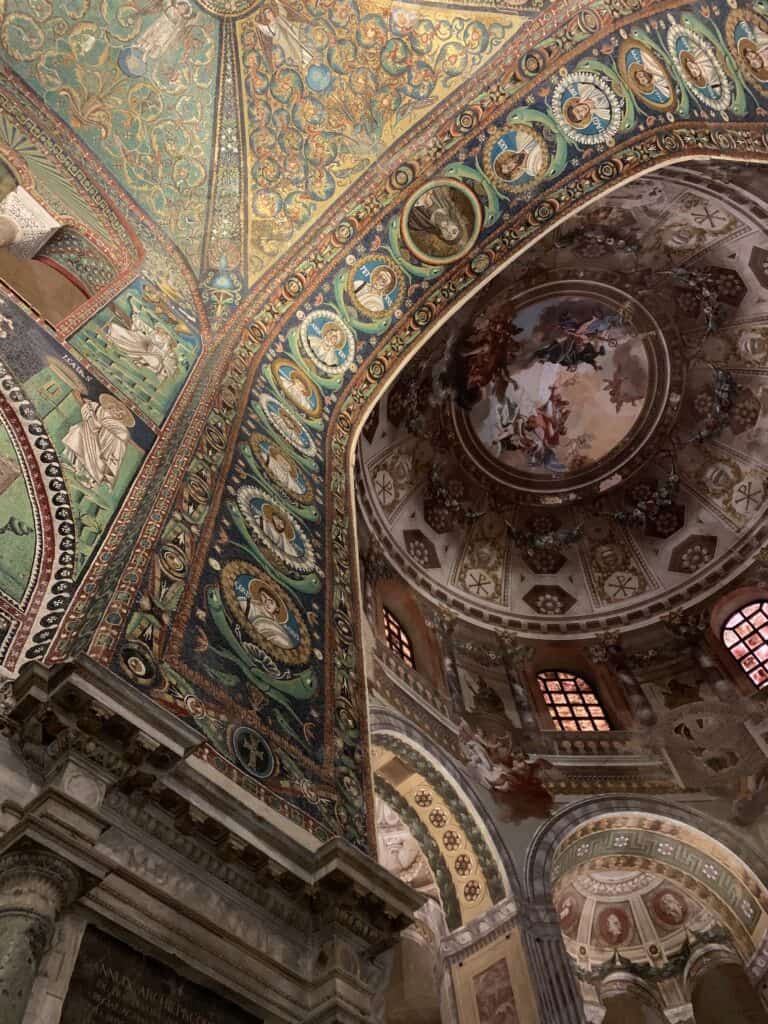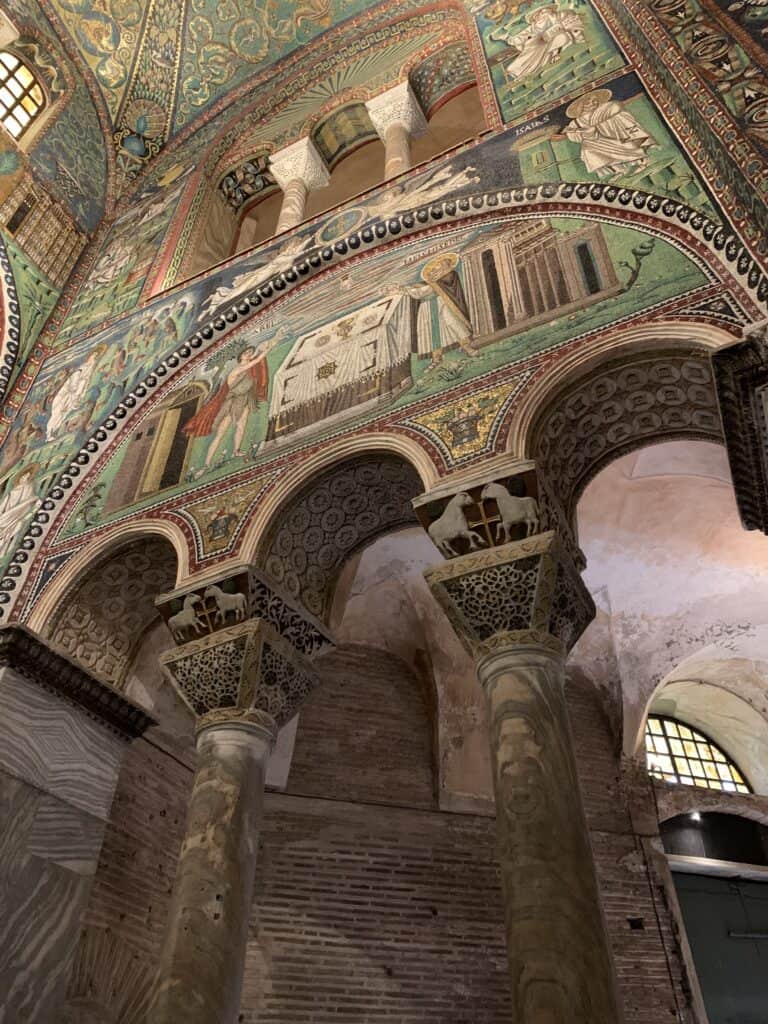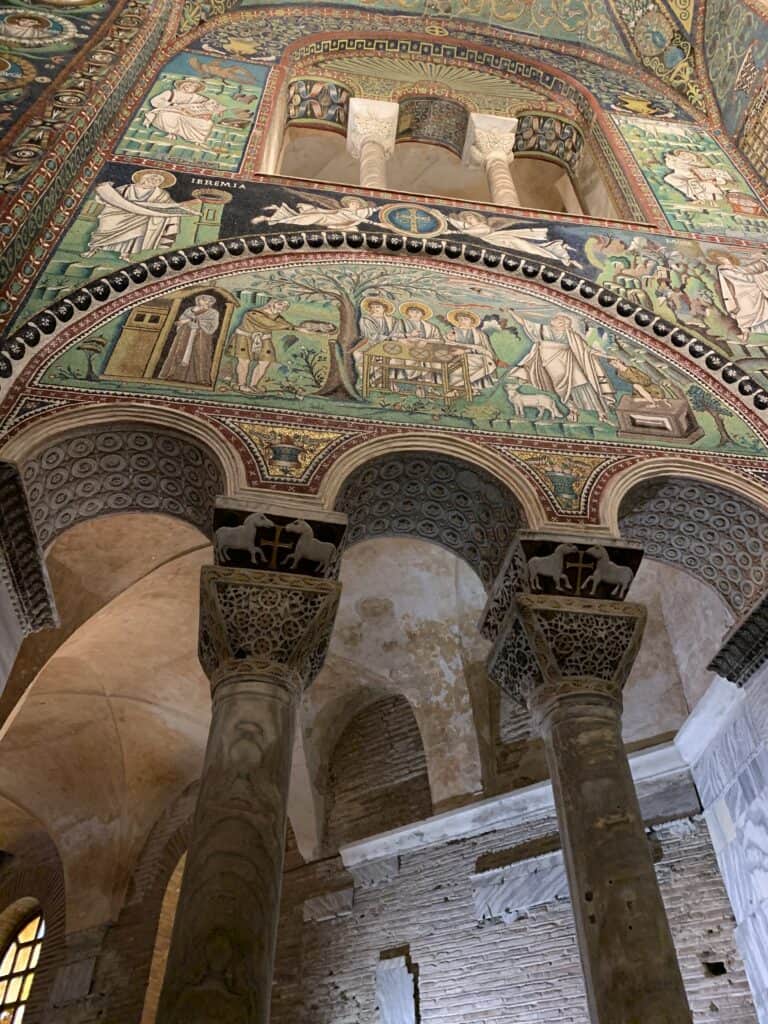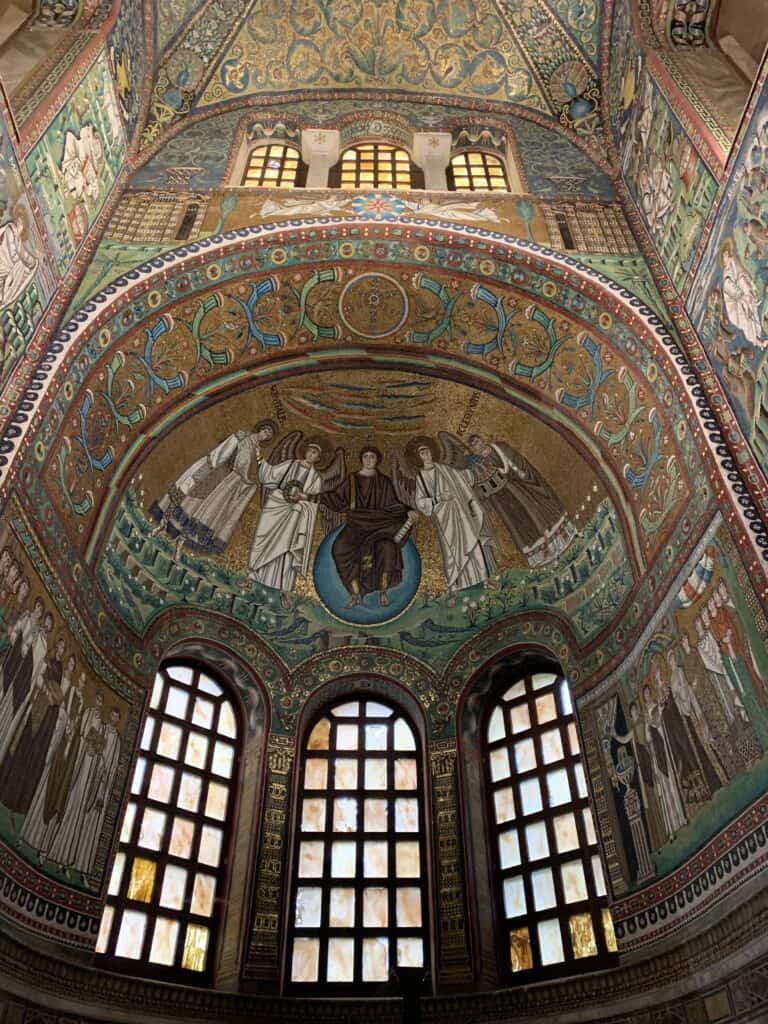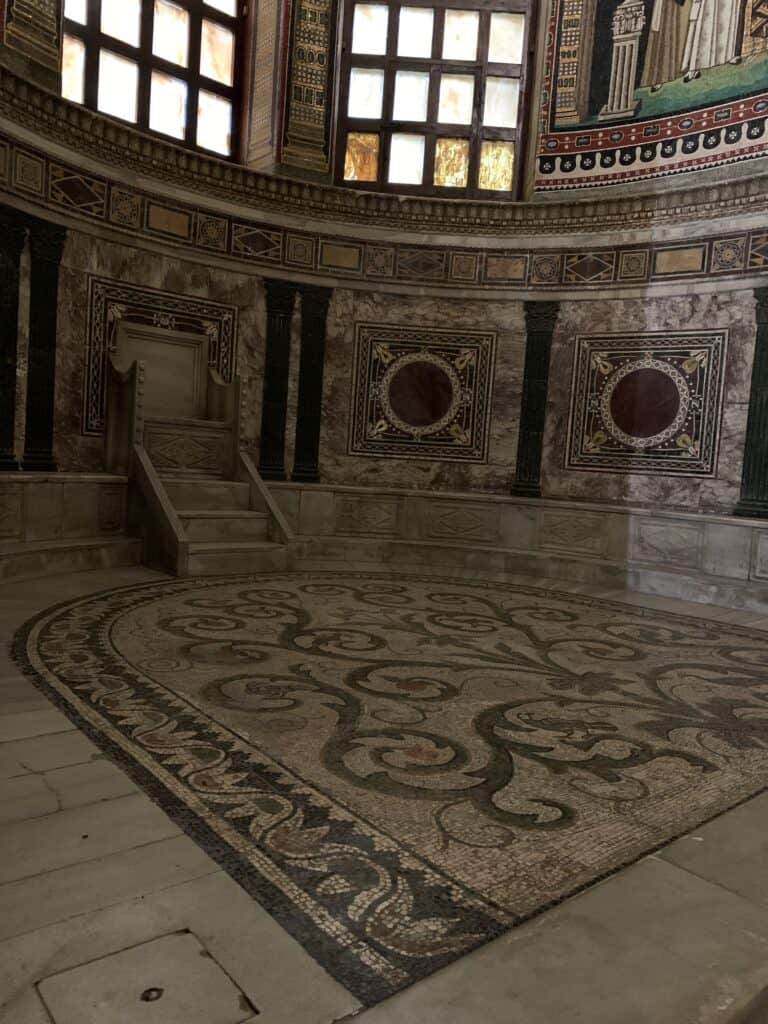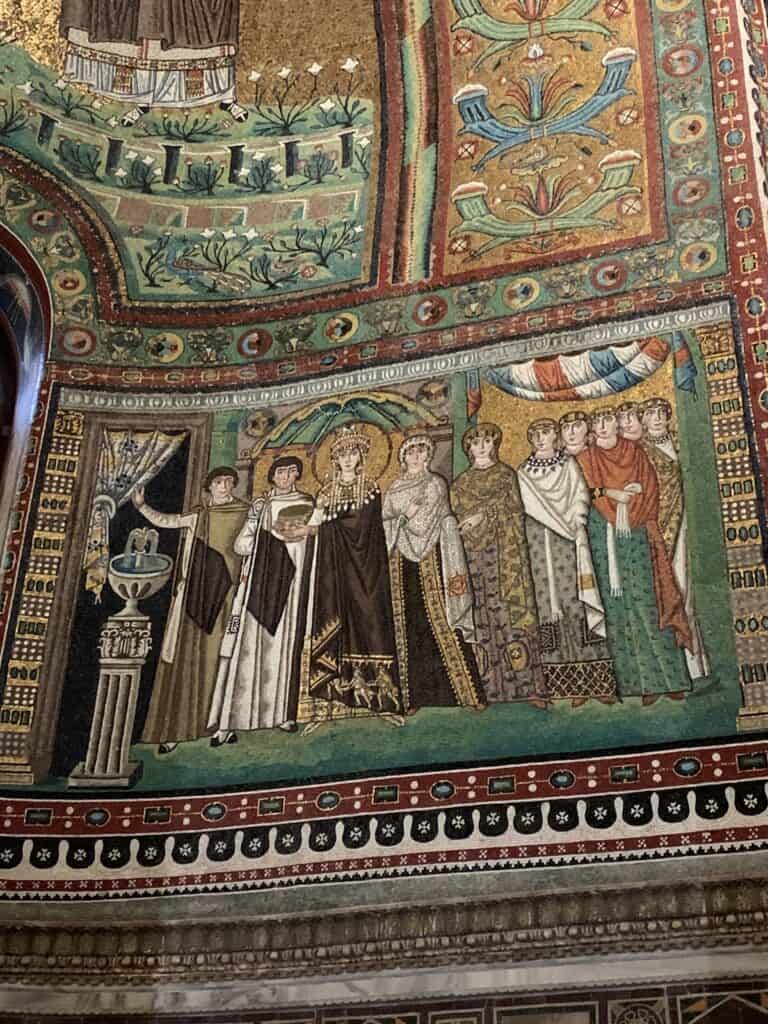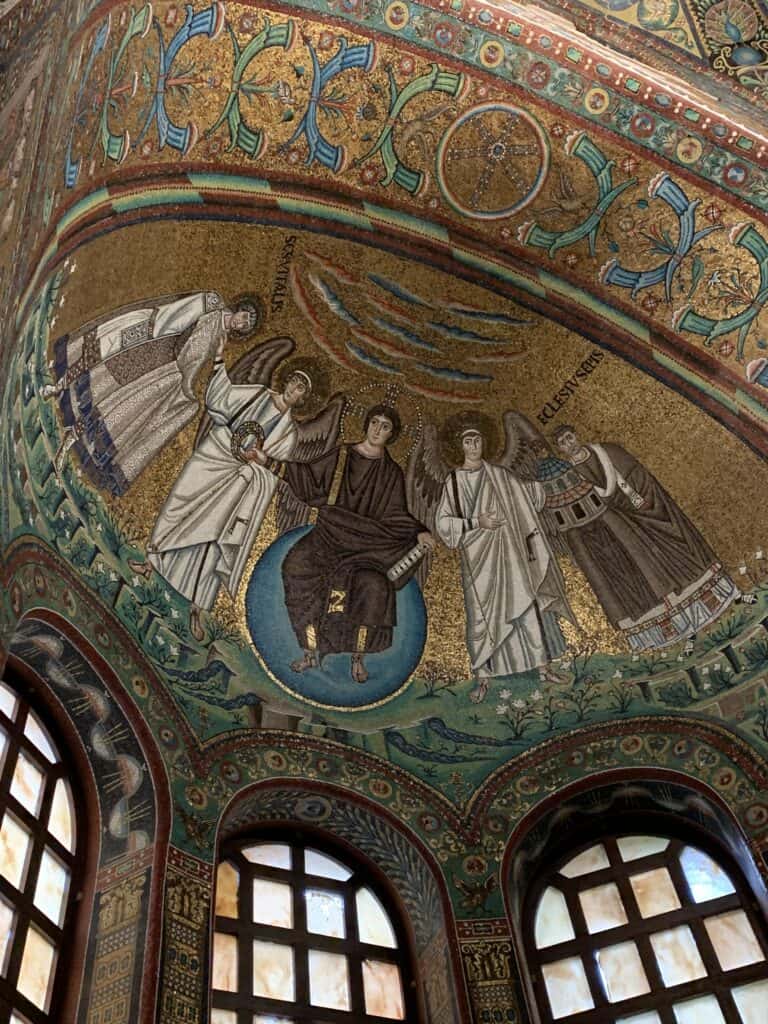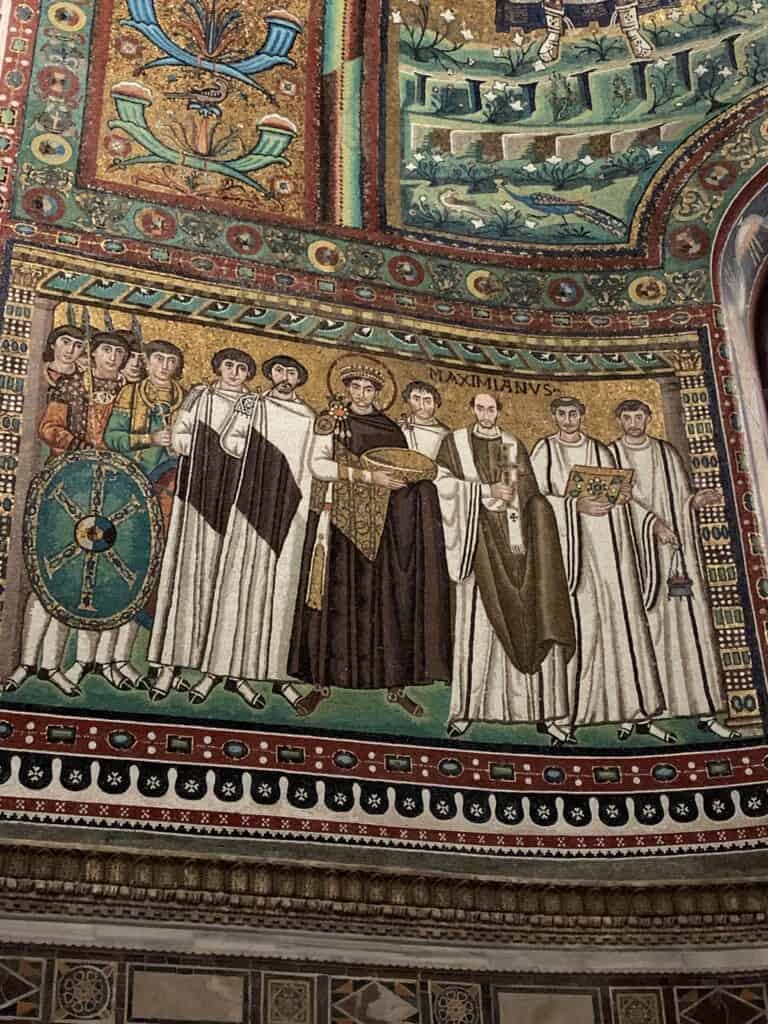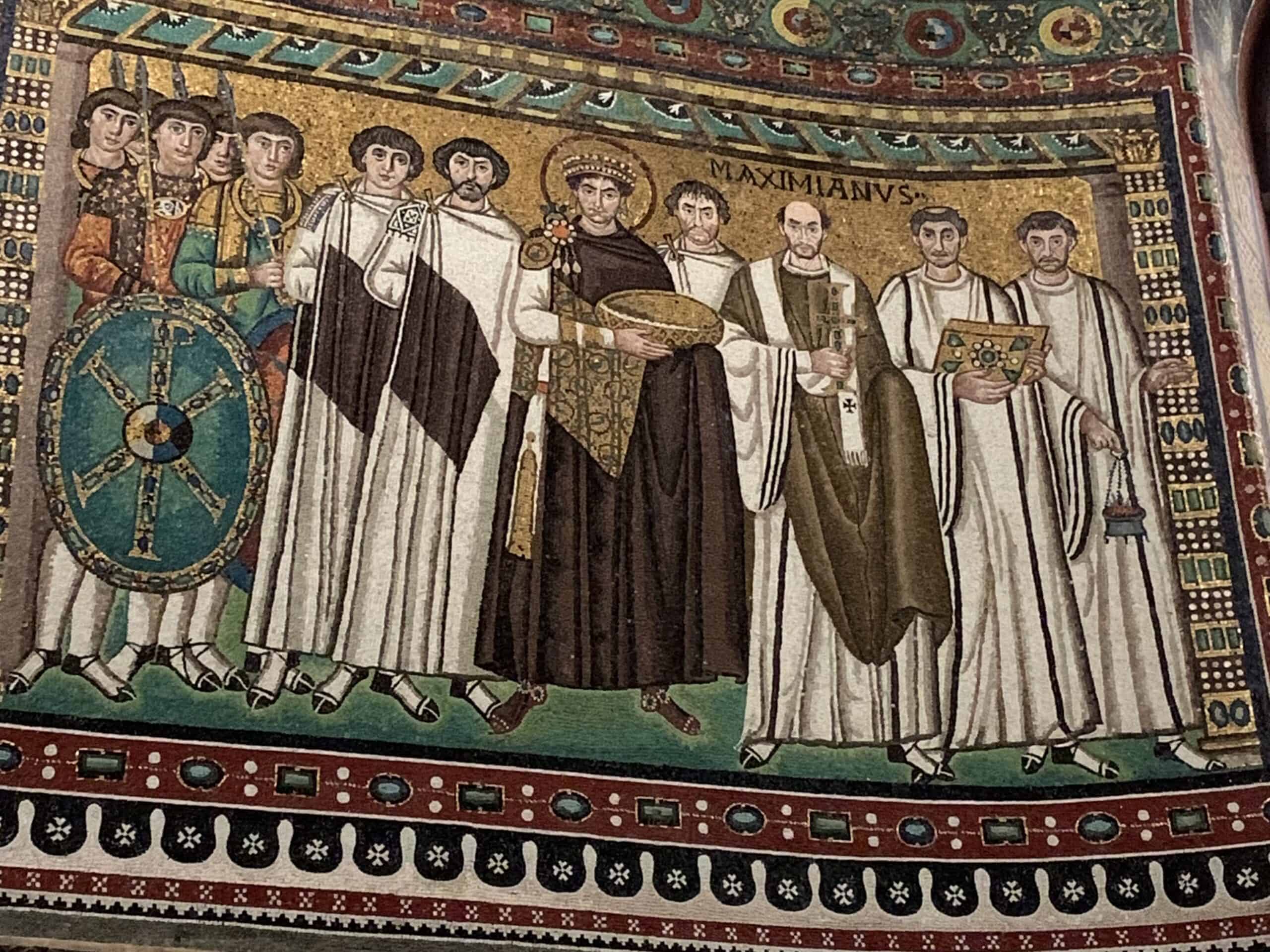
The Basilica of San Vitale is considered one of the most important early Christian monuments in Italy thanks to its history and numerous mosaics.
Under the Empire of Justinian two large and important churches were built to increase the imperial prestige towards the people. These two buildings are Hagia Sophia in Constantinople (today Istanbul) and the Basilica of San Vitale in Ravenna.
The Basilica of San Vitale dates back to the sixth century, was designed and begun under the Kingdom of the Goths, continued under that of the Byzantines who had conquered Ravenna in 540 and was finished during the Empire of Justinian I in 548.
Built with an octagonal base, it presents the fusion of Roman architecture (dome and portals) and Byzantine art (apse, capitals and brick construction).
The mosaic decorations of the apse date back to the Justinian era while the frescoes of the dome date back to 1780.
The most famous mosaics, placed in the two walls below the apse and in a mirror position, represent the procession of Emperor Justinian and his wife, Empress Theodora, who go as an offering to Christ Cosmocrator. Next to the Emperor in procession is represented Maximian (first Archbishop of Ravenna) and Belisarius (conqueror of Ravenna).
The scenes of the panels represent the oblatio Augusti et Augustae, or the imperial offering that both made to the most important churches of the territories under their control.
Also noteworthy is the parallelism between the processions of Justinian and Theodora and the biblical episode of the Magi offering gifts to Christ present in the Basilica of Sant’Apollinare Nuovo.
The Basilica of San Vitale was included in the list of Italian World Heritage Sites by UNESCO in 1996.
I thank the Opera Religion of the Diocese of Ravenna for its hospitality and availability.

